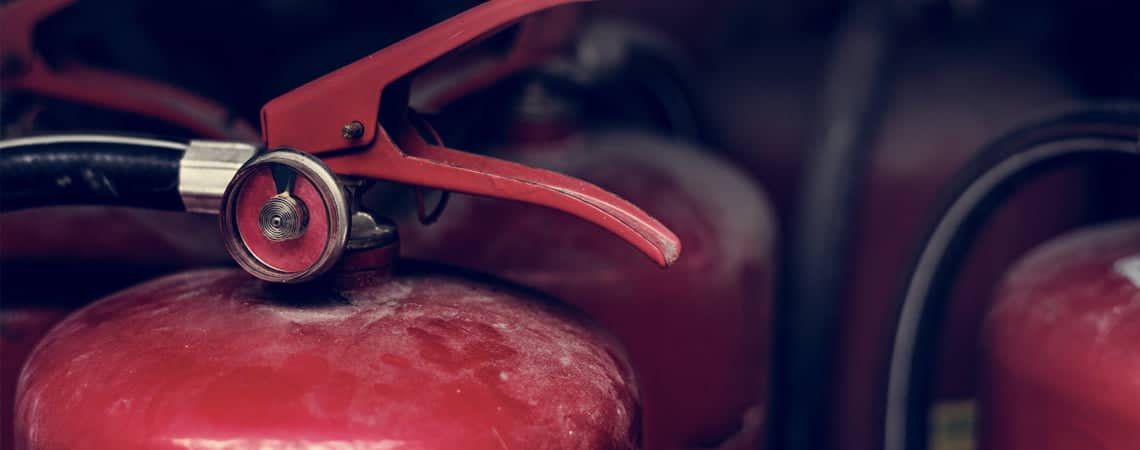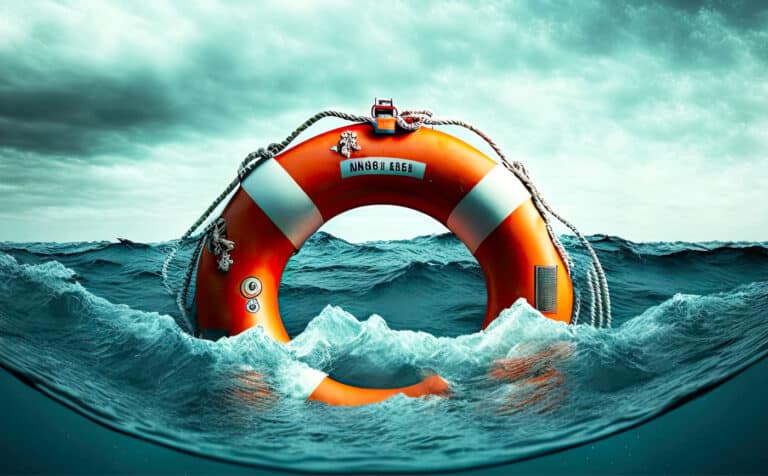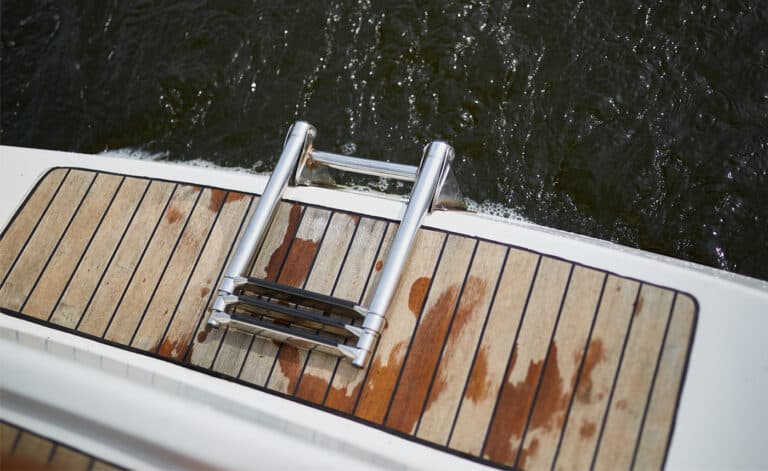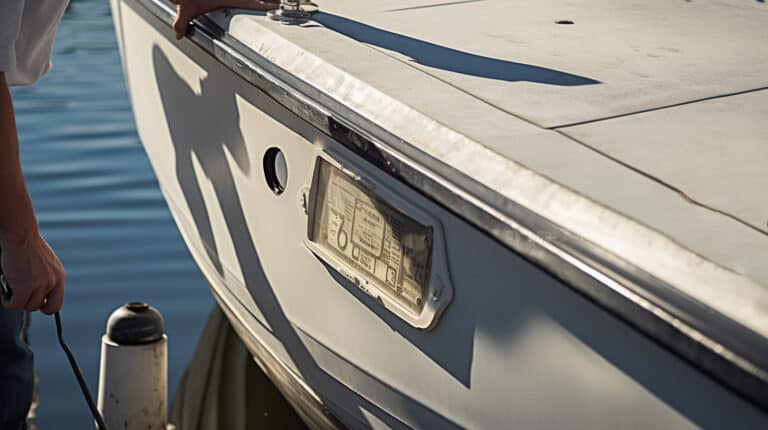Did you know that fire extinguishers are mandatory on boats? The United States Coast Guard has regulations outlining the types and number of fire extinguishers that must be present on a vessel.
But what is a requirement for fire extinguishers on a boat? Are there any size requirements, mandatory mounting locations, or perhaps requirements based on boat length?
You will find answers to these questions below. Additionally, we’ll give you some helpful tips on fire extinguisher usage and maintenance.
- Coast Guard Fire Extinguisher Boat Requirements?
- Understanding Boat Fire Extinguisher Types
- Where Should You Mount a Marine Fire Extinguisher?
- How to Use a Marine Fire Extinguisher
- Fire Extinguisher Maintenance
- How Long is a Boat Fire Extinguisher Good For?
- Frequently Asked Questions
- What is a Requirement for Fire Extinguishers on a Boat – Conclusion
Coast Guard Fire Extinguisher Boat Requirements?
The United States Coast Guard regulations define the following:
- The boats that fire extinguishers must be present on.
- The required boat fire extinguisher types.
- The number of fire extinguishers that must be present on boats.
Now, let’s have a deeper look at each of these points.
Which Boats Must have Fire Extinguishers on Board?
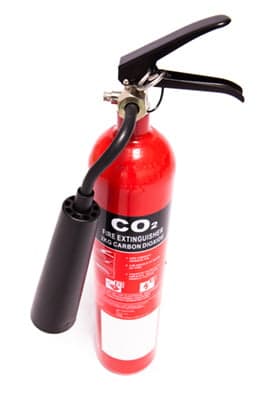
Fire extinguishers are a must on vessels that meet any of the following conditions:
- The boat has closed compartments or under-seat compartments where you may store portable fuel tanks.
- The boat has double bottoms that are either a) not fully sealed to the hull or b) not fully filled with flotation material.
- The boat has closed living spaces.
- The boat has closed stowage compartments with combustible or flammable materials.
- The boat has permanently installed fuel tanks. These are fuel tanks that cannot be moved in fires or other emergencies. Fuel tanks that are too heavy to be moved by those on board are considered permanently installed.
The Required Type and Number of Fire Extinguishers on Board
The US Coast Guard also regulates the number and type of fire extinguishers on board. The required number and type of fire extinguishers depend on whether or not the boat has a fixed fire suppression system.
If a vessel does not have a fixed fire suppression system, then fire extinguisher requirements are as follows:
- Boats shorter than 26 feet. 1 B-I fire extinguisher.
- Boats from 26 to less than 40 feet. 2 B-I or 1 B-II fire extinguishers.
- Boats from 40 to 65 feet. 3 B-I or 1 B-II & 1 B-I fire extinguishers.
For vessels that do have approved fixed systems, the requirements are as follows:
- Boats shorter than 26 feet. No fire extinguishers are required.
- Boats from 26 to less than 40 feet. 1 B-I fire extinguisher.
- Boats from 40 to 65 feet. 2 B-I or 1 B-II fire extinguishers.
There are three other requirements to keep in mind as well:
- Fire extinguishers need to be hand-portable.
- The extinguisher must be approved by the USGC and be rated for marine use.
- The extinguisher must be provided with a mounting bracket.
Understanding Boat Fire Extinguisher Types
We already know that USGC regulations require B-type fire extinguishers on boats. However, what are B fire extinguishers? What about other fire extinguisher classes?
In this section, we’ll have a look at fire extinguisher types and explain why precisely B-type extinguishers are mandatory on boats.
Fire Extinguisher and Fire Classification
Fire extinguishers are classified into five types in the US:
- Class A
- Class B
- Class C
- Class D
- Class K
Each fire extinguisher class is designed to extinguish the corresponding type of fire. That is, an A-type fire extinguisher is intended for class A fires, B for class B fires, and so on.
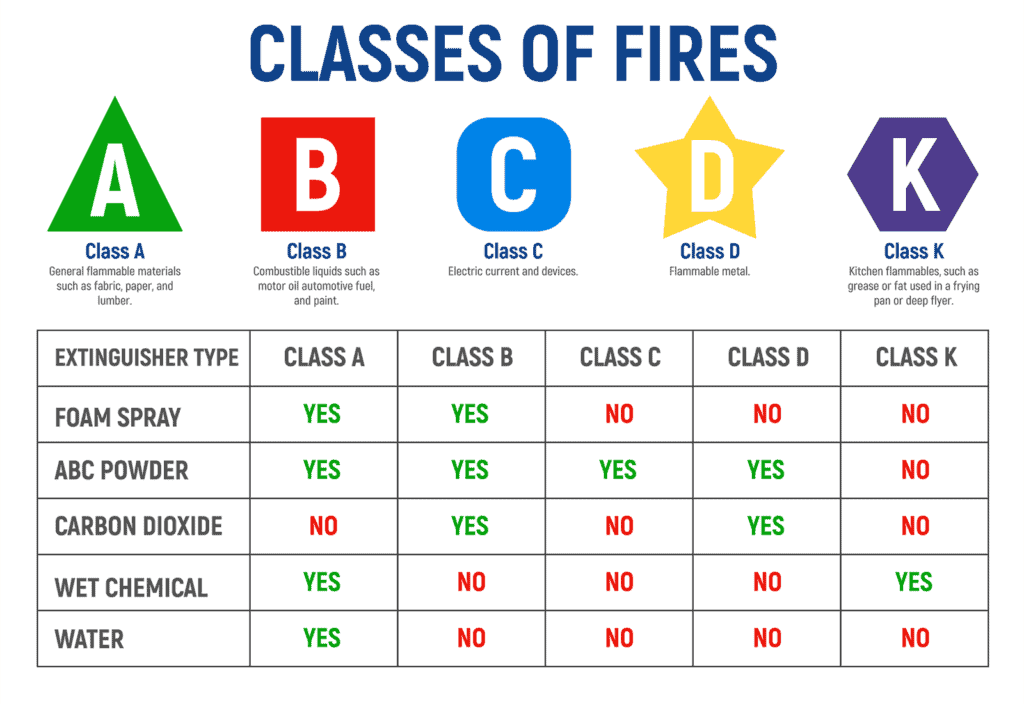
With this in mind, to understand fire extinguisher classification, we also need to understand fire types.
Here’s what fire letter classes mean:
- Class A fires. These are fires whose source is a combustible solid, such as wood or paper. The best extinguishing agent for class A fires is water or chemical foam.
- Class B fires. Class B fires are caused by flammable liquids, such as gasoline, octane, ethanol, acetone, and others. Typically, carbon dioxide, aqueous film-forming foam (AFFF), or dry chemical is used for class B fires.
- Class C fires. Class C fires are caused by a malfunction in electrical components. These fires are usually extinguished with carbon dioxide, though dry chemical may also be used.
- Class D fires. These fires are caused by combustible metals. Class D fires are extinguished by dry powder.
- Class K fires are caused by cooking oil or fat.
Fun fact – class B, class C, class D, and class K fires cannot be extinguished by water. Only class A fires can be extinguished by water.
You should use the right fire extinguisher to extinguish fires. For example, you should not attempt to extinguish a class D fire with a class K extinguisher. The wrong fire extinguisher may not be able to put out the fire, and it may even make matters worse.
Why Class B Fire Extinguishers on Boats?
Class B fires are the most common on boats, which is why the US Coast Guard requires class B marine fire extinguishers.
With that said, other fire classes may occur on vessels as well, so having only a class B fire extinguisher is not sufficient for all-around fire protection. Although B-I/B-II fire extinguishers will keep you safe in most cases, they will not be able to tackle fires of other classes.
Fortunately, you can find class ABC fire extinguishers out there. These will be able to safeguard you from class A, B, and C fires. For class D and K fires, however, you’ll have to get fire extinguishers separately.
Marine Fire Extinguisher Sizes
Marine fire extinguishers come in five sizes – I, II, III, IV, or V. For most recreational boats, size III fire extinguishers are overkill, let alone size IV or V.

Size I and II fire extinguishers are portable by hand, while the three remaining sizes are semi-portable.
The difference between fire extinguisher sizes lies in the amount of extinguishing agent they contain. For example, here’s how much agent is carried by B-I and B-II fire extinguishers.
| Class | Foam (gallons) | CO2 (pounds) | Dry chemical (pounds) |
|---|---|---|---|
| B-I | 1.75 | 4 | 2 |
| B-II | 2.5 | 15 | 10 |
Where Should You Mount a Marine Fire Extinguisher?
Marine fire extinguisher requirements do not specify where fire extinguishers should be mounted.
Ideally, you should mount your fire extinguishers in locations that can be easily reached. But contrary to what you may be thinking, fire extinguishers should be away from locations where there is a risk of fire. That’s because you should be able to safely access your fire extinguishers.
Among the best locations for fire extinguishers are the steering station, engine room, or the galley. These locations should be optimal for any recreational boat that is sized under 65 feet.
How to Use a Marine Fire Extinguisher
Fire extinguishers have usage instructions on them. Since fire extinguisher designs may differ, you should inspect your own extinguisher’s instructions. But generally, here is how to use a fire extinguisher:
- Pull the pin situated at the top of the cylinder.
- Aim the fire extinguisher nozzle at the base of the fire.
- Squeeze or press the extinguisher handle.
- Sweep the fire extinguisher hose from side to side until the fire goes out.
These steps are also called PASS. Remember this word along with the words its letters stand for.
Fire Extinguisher Maintenance
You should regularly inspect your fire extinguisher to make sure that it is ready to go in emergencies. Fire extinguishers do go bad, so you should keep an eye on yours to replace them promptly if necessary.
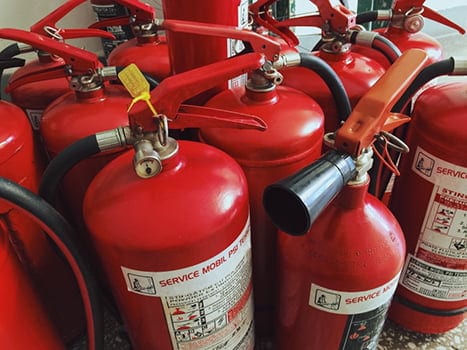
You should inspect your fire extinguishers at least once a month, though you may perform checks more frequently too.
Here’s what you should do during your fire extinguisher inspections:
- Check the gauge to ensure that the fire extinguisher is full.
- Make sure that the seals have not been broken.
- Inspect the hose for any signs of damage. Replace the hose if you do find any.
- If you have a dry chemical extinguisher, weigh it. It should meet the minimum weight requirements listed on the label.
How Long is a Boat Fire Extinguisher Good For?
Fire extinguishers may go bad after years of storage, so you should make sure that you always have fresh and ready-to-go fire safety equipment on your boat.
Strictly speaking, the contents of fire extinguishers do not expire. However, there are several factors that may affect your ability to effectively use a fire extinguisher:
- Corroded elements may not allow your fire extinguisher to eject the extinguishing agent.
- A broken or cracked hose will not be able to direct the agent where you are aiming.
- Punctured fire extinguishers will leak over time and will lose the pressure required to eject the agent.
If you regularly perform monthly inspections, then you should be able to notice any of these signs.
Fire extinguishers also sometimes have an “expiration date” – a date by which the fire extinguisher should be replaced. You should be able to find the expiration date on the label or in the manual of the fire extinguisher. But keep in mind that not all manufacturers indicate expiration dates.
You should also replace fire extinguishers if they meet the following two conditions:
- They use obsolete technology. As an example, soda acid fire extinguishers are no longer considered effective.
- Their manufacturers are out of business. Although a fire extinguisher can stay perfectly intact throughout years, if you have an old fire extinguisher and its manufacturer is no longer in business, it’s a good sign that you should replace your equipment.
Frequently Asked Questions
How Many Fire Extinguishers are Required on a Boat?
This depends on the size of your boat and whether or not it has an approved fixed fire suppression system.
Multi-class marine fire extinguishers are allowed on boats as well. For example, if you have an ABC fire extinguisher, then your boat is compliant with fire extinguisher boat requirements.
What does the B on a B-I Fire eExtinguisher Indicate?
The B indicates the type of fire a fire extinguisher can put out. Class B fires are caused by flammable liquids such as acetone or gasoline. These fires are the most likely on boats, which is why the USGC regulations require class B fire extinguishers.
How Many B-I Fire Extinguishers should 26-40 Feet Boats Have?
26-40 feet boats should have 2 B-I fire extinguishers if there are no fixed fire suppression systems on board. If you do have approved fixed systems, then you are only required to have 1 B-I fire extinguisher.
What is a Requirement for Fire Extinguishers on a Boat – Conclusion
So what is a requirement for fire extinguishers on a boat?
- Your fire extinguishers must be rated for marine use and approved by the USGC.
- Your fire extinguishers must be hand-portable.
- Your fire extinguishers must come with a mounting bracket.
- Your fire extinguishers must be able to extinguish type B fires.
- You must have a specific number of fire extinguishers based on the size of your vessel.
